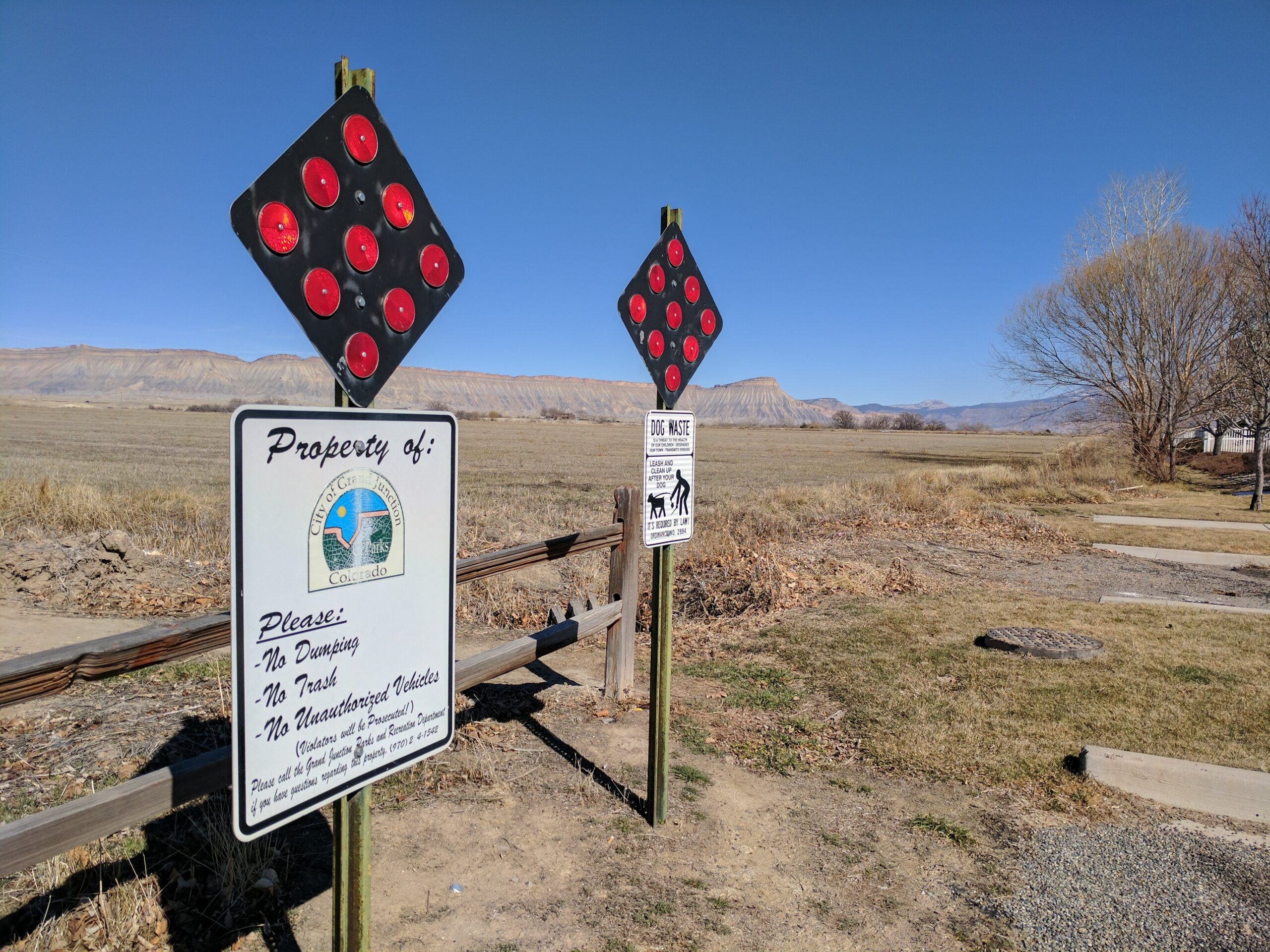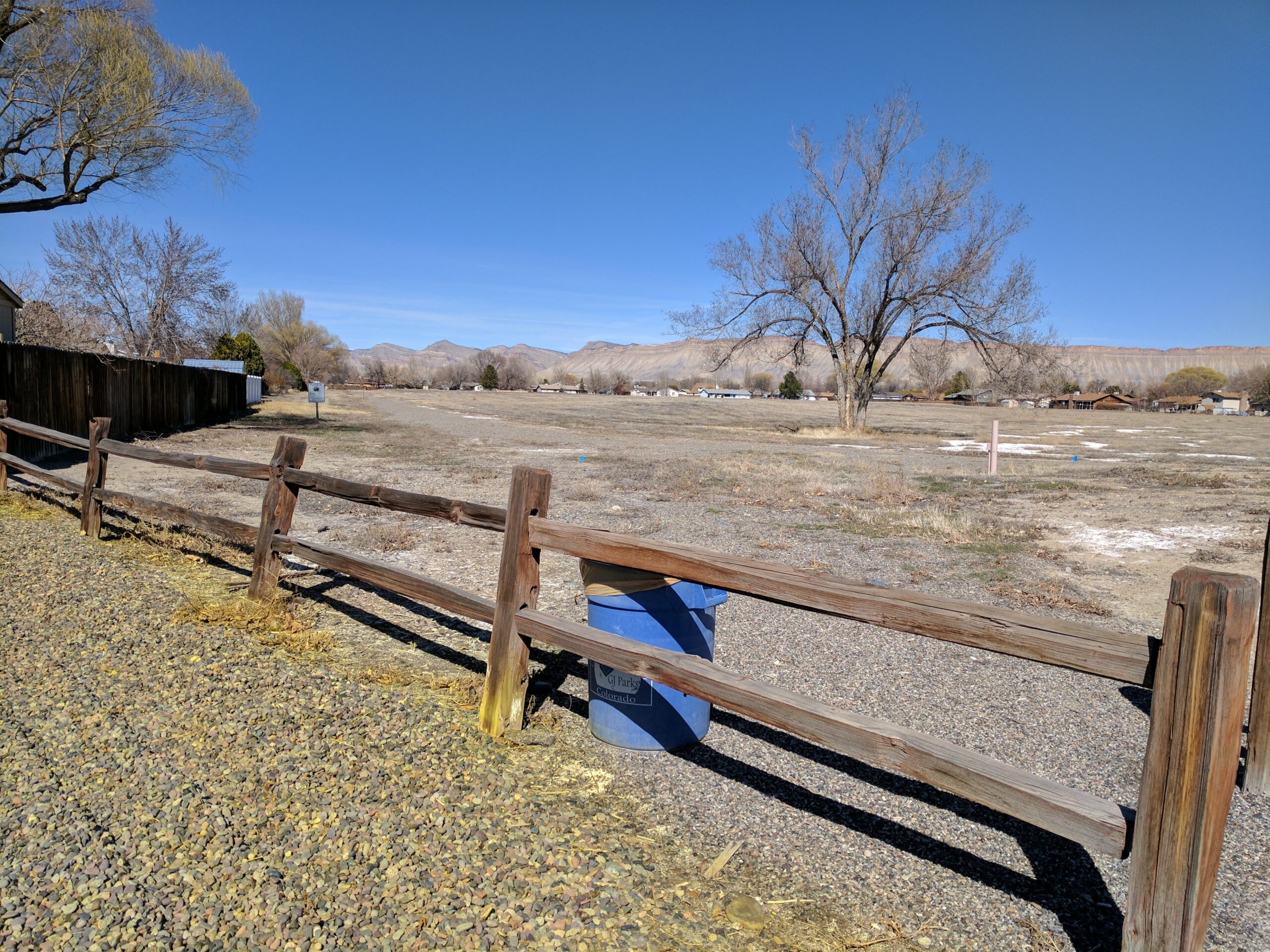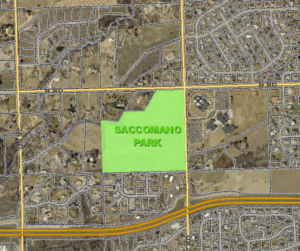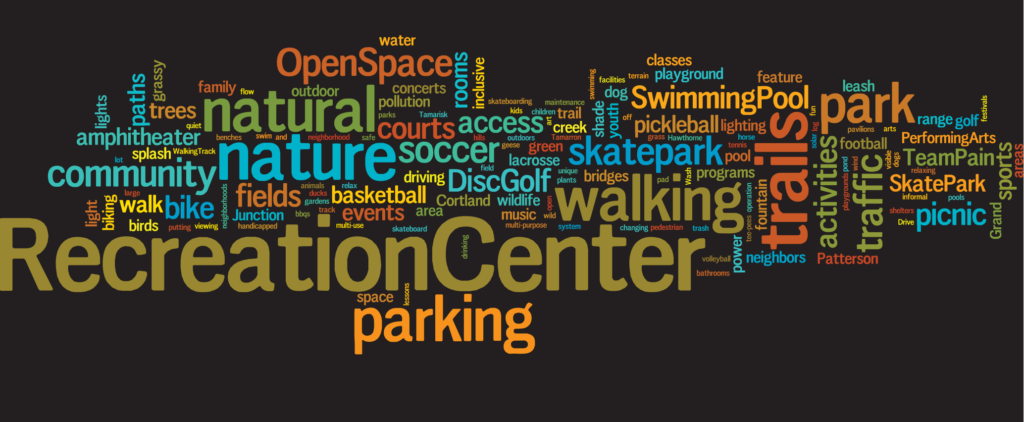
The City of Grand Junction owns a number of large land parcels around the valley that are designated as parks, but that are little more than vacant lots unused by the public.
“Saccomano Park” is a beautiful 31 acre lot at the corner of 26 1/2 and H Roads, kitty corner to the Paradise Hills subdivision. It boasts expansive 360 degree views, but doesn’t do much good to it’s surrounding neighborhood because there isn’t even a walking path around the parcel. The City leases the land to farmer who raises corn on it.
“Burkey Park” is a 17 1/2-acre vacant lot just north of Patterson Road and east of the Oxbow Subdivision. It’s only feature is a split rail fence along Patterson, a blue “City of Grand Junction” plastic trash can and a parking area big enough for one car. That’s it.

“Horizon Park” is a 12 1/2 acre parcel on the west side of 27 Road (north 12th Street) between G and G 1/2 Roads. It has beautiful views of the Grand Mesa, a few volunteer elm trees and a crude dirt road around the edges. Currently the City uses Horizon Park to store gravel to be used to chip-seal streets. There isn’t even so much as a bench to sit on there.
The Dropped Promise to Develop Matchett Park
And then there’s the huge, unfulfilled promise of “Matchett Park,” the 205-acre parcel north of Patterson and 28 1/4 Roads.
The City acquired the Matchett property in 1996. It has been sitting undeveloped ever since — for 21 years now. Five years ago, in 2012, the City declared there was a “pressing need” for more parks in town, and directed City staff to create a master plan for development of the Matchett property. It was to be the City’s largest and most complete park. The City conducted an online survey about the proposed park, to which over 1,900 people responded. Sixty one percent of survey respondents said their single most-desired feature was a community recreation center. The City held extensive public meetings over a period of months that hundreds of people actually attended. Ultimately, after much study, planning and deliberation, the City produced a master plan (pdf) for a terrific park with two ponds, nature trails, a dog park, a disc golf course, volleyball courts, a grand lawn and the long-sought-after community recreation center. According to the City’s website, the city even got a Great Outdoors Colorado grant to fund 75% of the cost of building the new park,
All that planning and the creation of the master plan was done back in 2014.
So what’s happened since then?
Nothing.
Zip.
Nada.
Why hasn’t anything happened?
Not enough funding, according to City Parks and Recreation Department.

More Parks: A Perpetual Promise Dangled Before Residents of the City of Grand Junction
The City already owns multiple undeveloped parklands in high-need areas. Council long ago identified a pressing need for new parks, did all the legwork to develop Matchett Park into a fabulous jewel of a park, generated fanfare and hoopla over the project and even obtained three quarters of the funding to pull it off. So what did the City do then?
Put a measure on the ballot seeking funds to build… an events center downtown?
Talk about taking your eye off the ball.
It seems City Council has gotten distracted by a new and shiny object.
Why are parks important?
 Parks confer tremendous physical and psychological benefits upon communities. They help boost mental and physical health, reduce people’s stress, help get kids outside, provide places for parents to bond with children, provide places where neighborhood residents can get out and interact with each other, provide places for lonely people to get out and be with other people. Parks help decrease crime rates among youth, preserve natural ecosystems and make a town more beautiful and inviting. They also increase property values for properties near the parks.
Parks confer tremendous physical and psychological benefits upon communities. They help boost mental and physical health, reduce people’s stress, help get kids outside, provide places for parents to bond with children, provide places where neighborhood residents can get out and interact with each other, provide places for lonely people to get out and be with other people. Parks help decrease crime rates among youth, preserve natural ecosystems and make a town more beautiful and inviting. They also increase property values for properties near the parks.
Can you imagine what your childhood would have been like without a park? How many of your childhood memories took place in a park? Many Grand Junction children don’t have access to parks, and that’s a big minus not just for existing community members, but for attracting a talented workforce as well.
People need parks.
The only problem with parks is, they don’t generate big profits for many area businesses. Their benefits are less tangible and more specific to the quality of life of regular working people. Those benefits are no less important, but they have been treated as far less important by the powerful people in town who can make things happen — or not.
Sure, an events center would be great if implicit promises hadn’t already been made years ago to develop the Matchett property into a terrific and much-needed park, including a community center, and if city council hadn’t put other quality-of-life projects perpetually put on the back burner.
It would’ve been much more fair to citizens if the City had said “no” to the events center proposal until after they finished developing Matchett Park, which was on the front burner until City council got distracted by the next shiny object.
Parks may not have the direct effect of making local business owners more successful, but they do increase city residents’ overall satisfaction and physical and mental health, and in order to get more respect and commitment to town from residents, sometimes you have to invest in amenities that enhance peoples’ lives here, and not concentrate so much solely on enhancing the fortunes of local business owners to the exception of all else.

